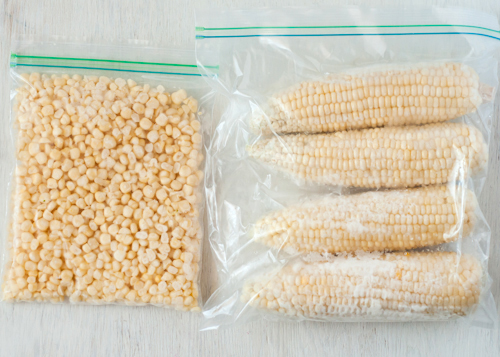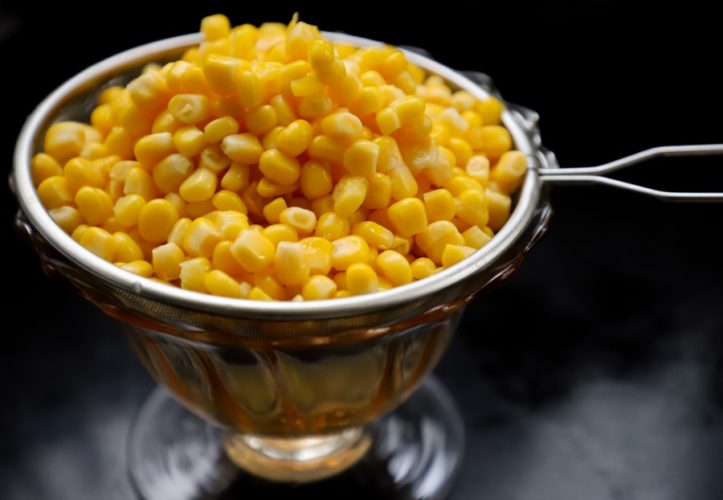Few South Africans will consider how to freeze mealies. Most smallholdings have a stand of mealies – it is almost compulsory. And some of us keep chickens, so we store the maize to feed the poultry for the rest of the year.
However if you have a good crop you can also think about freezing some for the family to enjoy in winter.
You Will Need
You will need a large pot of boiling water, plenty of ice, a vacuum food sealer or freezer bags (Ziploc or bags with tie twists), two large bowls, one filled with cold water and ice, a sharp knife and a large spoon.
Preparing the Mealies for Freezing

When you are picking your mealies a good rule of thumb is to “shake hands with your mealie” – if the cob fills your hand nicely and the silk on the top is brown, it’s ready to pick. If it feels too scrawny, look for larger cobs to freeze. The kernels should still be tender (easily punctured with your fingernail and juicy).
Pick early in the morning and deal with them immediately. If there is a delay between harvesting and freezing, put them in the refrigerator or put ice on them. The sugars break down quickly at room temperature.
Take all the husks off the cobs.
Clean the corn by rubbing the silky fibres off the cleaned cobs with your hands or with a soft brush. It helps to keep a bowl of water on the table while working to dip your hands into, as they become sticky.
Method
You can freeze the whole cob or you can take the kernels off the cob to freeze in bags, which takes less space in the freezer. Either way you will need to blanch the cobs first.
Fill the largest pot you have to ¾ full with hot water, put it on your largest burner or straddle two stove plates and bring it to a full rolling boil.
Next, fill large bowl with ice and cold water. You may need to buy a bag or two of ice if you are planning to do more than a dozen mealies.
All fruits and vegetables contain enzymes that, over time, break down the nutrients and change the colour, flavour, and texture of food during frozen storage. That is why we blanch food, as this destroys the enzymes before freezing.
Put the mealies in the water, put the lid on and bring the water back to a rolling boil. Blanching times vary according to the size: seven minutes for small cobs, nine minutes for medium sized and 11 minutes for large mealies. Begin counting the blanching time as soon as you place the cobs in the boiling water. Cover the pot and boil at a high temperature for the required length of time. You may use the same blanching water several times (up to 5). Be sure to add more hot water from the tap from time to time to keep up the water level.
After blanching, cool them quickly to prevent overcooking, by putting them into the large bowl of ice-cold water.
Whole Cobs or Kernels
You can freeze the cobs whole in bags or you can take the kernels off the cobs. To do this, press along the rows with the side of a knife. Don’t cut the kernels or you’ll lose the richly flavoured heart and juice.
Don’t overfill the bags. You don’t want them totally full, just enough so you can close them easily and then flatten them out so they store easily.

If you are using freezer bags, try hard to remove as much air as possible from a bag by sucking it out with a straw before you seal it.
Put them into the freezer, on the quick freeze shelf, if you have one.
When you want to eat the mealies you can poach the cobs in half-milk/half water with a dash of salt until just tender or you can grill them while they are partially frozen on the braai.
If you bagged the kernels partially thaw them for about five minutes before cooking them. They can be simmered in a little butter until tender.
You might also want to consider bottling the mealies. Parboil the cobs, cut off the kernels, fill the jars add water, boil in jars in a large pot, allow to cool and then seal.
Click here for more recipes and here for more about processing produce.
To receive all our notices and each edition of SA Smallholder register here.

